
In light of the Indian government’s response to this past weekend’s bombings in Delhi, this video seems especially poignant (not to mention sweeet!).

[hat tip: chapati mystery]
We have had a lot of discussion about the Sikh identity here on TLH, so it is no surprise that when I saw this movie poster I immediately wanted to bring it to your attention.
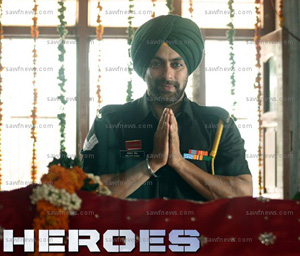 Bollywood is doing it again – another movie with Sikhs. But instead of what we have seen in the past with Sikhs often portrayed as unflattering villains and goofballs, it seems that the trend now is to cast people in Sikhs roles where the Sikhs are the heroes. I suppose it is partly in that spirit that the movie is called “Heroes.”
Bollywood is doing it again – another movie with Sikhs. But instead of what we have seen in the past with Sikhs often portrayed as unflattering villains and goofballs, it seems that the trend now is to cast people in Sikhs roles where the Sikhs are the heroes. I suppose it is partly in that spirit that the movie is called “Heroes.”
Heroes is about two friends who journey through India meeting everyday heroes, at least one of whom is a Sikh. But that is not the part that interested me of course. The interesting part is not the story line, but all of the press that Salman Khan (the actor who plays a Sikh hero) has gotten for his attempt to play a real Sikh.
Salman Khan [is] seen in a Sikh makeover for the first time ever and he makes a good looking jatt Sikh with a beautifully tied turban. He grew his beard for three weeks before the filming for an authentic bearded Sikh look. Source.
I think this is probably the first time that I have heard this happening. Although, I think actor Sunny Deol may have grown his own beard for a couple of his roles as a Sikh – it has never been so explicitly commended or publicized. I’m not sure how I come down on this, but all the press does point to a deliberate effort by Bollywood to NOT-offend Sikhs, which I think is a positive move on the film industries part.
Update: wow, I did an AWFUL job of summarizing SRI’s first webinar. (Apologies to the good folks at SRI) Here’s a better summary:
Sikh Theology – A Gurmat Framework: The first session comprised of introducing an approach to Sikhi and recognizing how Guru Nanak Sahib revolutionarily delivered a message of Oneness through illustrating a direct connection between ideas and practice. We engaged in understanding what ‘Guru’ means in the Sikh context and how we can begin to comprehend the Guru’s wisdom, Gurmat. To develop this understanding, three facets of bani (scripture), tavarikh (history) and rahit (lifestyle) were introduced. The greatness of a religion is when harmonious balance between Ultimate reality and visible form is exemplified thru the aforesaid facets. We concluded with Puran Singh’s rendering on the Guru’s vision, “It sweetens you and your sweetness sweetens all life around. At your sight, the lamb and the tiger must drink at the same pool.”
And some info on session 2:
Bani – The Message: In session two, we continued to build on our understanding of the Guru’s message; We engaged in actively learning about the scriptural canon, the Guru Granth Sahib. In covering topics as the compilation, contributors, structure, language and content of Guru Granth Sahib, we tackled questions such as, “How do we know Guru Granth Sahib is the Guru?” and “What is the Sabad Guru?”; thus, facilitating and inspiring us to continue to build our personal relationship with Guru Granth Sahib.
And 3:
Tavarikh – The Revolution: Having concentrated on the written form of our Guru’s message (Bani) last week, this week in session three, “Tavarikh – The Revolution”, we will turn our focus on to how our Gurus exemplified The Message. We will walk through the lives of Guru Nanak Sahib through Guru Gobind Singh Sahib and try to understand them through a social, political, economic and spiritual framework. We will cover a range of issues, from touching on the ramifications of negating the need of a Divine intermediary, to the economic center created by the Guru Sahibs, to the activism of both social and political kind. In surveying the inspiring history of our Gurus, we hope to remind ourselves of how relevant, active and exemplary the revolution of Sikh? is.
Dr. Pashaura Singh, Professor at University of California, Riverside, was recently appointed to its Dr. Jasbir Singh Saini Chair in Sikh and Punjabi Language Studies. However, not without controversy. There have been several incidents since his inception to the Chair where members of the Sikh community have challenged his appointment because of Dr. Singh’s interpretation of the Sikh scriptures.
Sikhs believe the scriptures were revealed to a series of gurus…those revelations in the form of 6,000 hymns were compiled in 1604 by the fifth guru, Guru Arjan, and became the holy scriptures. Pashaura Singh’s thesis and subsequent research are based on a manuscript that surfaced in 1987 that he believes is a draft of the 1,430-page document compiled by Guru Arjan. Singh says the so-called 1245 manuscript, part of the rare book collection at Guru Nanak Dev University, includes sections that are blank and others that have been crossed out, showing evidence of having been edited. [link]
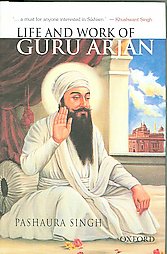 The story goes back many years. Singh, coming from the University of Michigan, was hired in 2005 to teach Sikh and South Asian religious studies. While at that time the chair position was not official, Dr. Singh was recruited with the promise of a potential endowed chair that would provide him with financial support for research. At that time, members of the Sikh community expressed concern about Dr. Singh’s appointment stating his research was problematic and challenged traditional Sikh views. Another issue stemmed from the fact that Ellen Wartella, executive vice chancellor and provost, assured the community in writing that while Singh would teach religious studies “it has been determined that he will not hold this chair.” The community is upset that the university went back on its word.
The story goes back many years. Singh, coming from the University of Michigan, was hired in 2005 to teach Sikh and South Asian religious studies. While at that time the chair position was not official, Dr. Singh was recruited with the promise of a potential endowed chair that would provide him with financial support for research. At that time, members of the Sikh community expressed concern about Dr. Singh’s appointment stating his research was problematic and challenged traditional Sikh views. Another issue stemmed from the fact that Ellen Wartella, executive vice chancellor and provost, assured the community in writing that while Singh would teach religious studies “it has been determined that he will not hold this chair.” The community is upset that the university went back on its word.
Today, members of the Sikh community are still upset about Dr. Singh’s appointment and are arranging a peaceful protest on the university grounds on September 26th, 2008.
The idea that the scriptures were edited or changed is blasphemous to traditional Sikhs. “If this is true, then the revealed word of God is not the revealed word,” said Dr. Baljeet Sahi, an Altadena veterinarian and president of Sikhs for Preservation of Sikhism and Sikh Heritage. Sahi called the 1245 manuscript fraudulent and said it was obtained from a scrap dealer. He said it may have been written by one of the guru’s rivals, who started a parallel tradition after he was denied a guruship. [link]
Jagmohan Malhi has become New Zealand’s first officer to wear the custom police turban. Following in the footsteps of the British constabalry (who also have specially tailored turbans), and the MTA, New Zealand  adopted the new attire after Malhi’s campaign to include the turban in the uniform.
adopted the new attire after Malhi’s campaign to include the turban in the uniform.
Interestingly, Malhi discusses the many challenges and accommodations he’s made since coming to the New Zealand, including cutting his kes and dari when he first arrived. I found this move towards practice really interesting; Malhi mentioned that he wanted to make this possible out of respect for his dying father’s wishes.
Is this the “right” rationale for this move? On one hand, I think it’s admirable and important for there to be the option and existence of visible Sikh officers in New Zealand’s police force. On the other hand, how do we make this possible, and how do people come to this place?
Over the weekend, a wave of bombs targeting civilians was unleashed in the Indian capital of Delhi. With the death toll rising (so far approximately 30), a group called the “Indian Mujahadeen” has been widely reported by the media as having claimed responsibility. This was not the first time the Indian people has seen such attacks.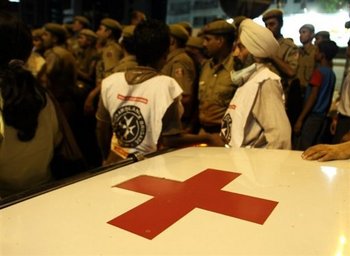 In fact, this was the third such wave this year alone.
In fact, this was the third such wave this year alone.
While families are mourning the loss of their loved ones, I can only express grief for their loss. I have read about individual acts of heroics:
“Last night was spent running from one department to the other looking for my son who had gone to Gaffar Market with his friends when the blast took place. He was injured and was helped by a young Sikh who brought him to the hospital on his scooter and later called us to inform that my son was injured. I did not even get a chance to thank the good Samaritan properly,” said Mohammed Ahmed. He said he was happy that his son was alive. [link]
However, soon afterwards, I have read some of the scariest reports of all. With people still in grief, fascists within the Indian state have not hesitated to hope for a sort of declaration of martial law over the entire country.
In the past, several posts have focused on the work of the Sikh Coalition around community mobilization to fight school bullying and the launch of an educational tool. 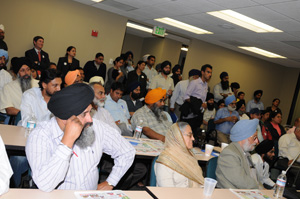 As part of the Sikh Coalition’s on-going work, it has opened a new office in Northern California to provide coast–to-coast civil/human rights advocacy for Sikhs. On September 10th, over 100 attendees, including local community members and politicians, celebrated the Sikh Coalition’s office opening in Fremont, California.
As part of the Sikh Coalition’s on-going work, it has opened a new office in Northern California to provide coast–to-coast civil/human rights advocacy for Sikhs. On September 10th, over 100 attendees, including local community members and politicians, celebrated the Sikh Coalition’s office opening in Fremont, California.
The Coalition’s, Western Regional Director, Neha Singh, said:
“Fremont is nationally the heart of the Sikh community … since we started, we’ve always taken cases from around the country, and a large amount of them were from the Bay Area. We thought it was now time to open an office in an area where a lot of the people requesting our services were.”
On September 19, a full bench of the Punjab and Haryana High Court will begin hearing arguments to decide the constitutional contours that define a Sikh under the Gurdwara Act of 1925. The decision will have important consequences, such as whether sahajdhari Sikhs ought to have voting rights in SGPC elections.
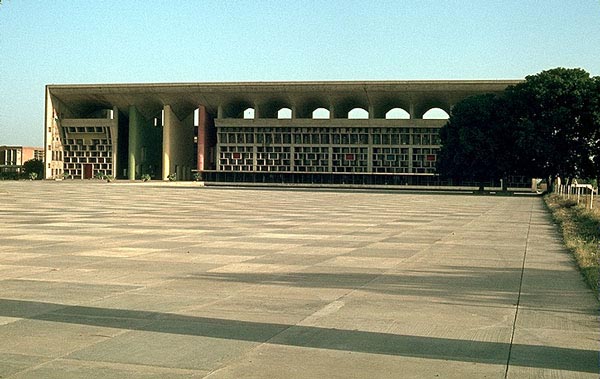 I’m not completely sure how the courts in India work, but the full bench seem to be joining two unrelated cases, that both turn on the definition of a Sikh, under the Gurdwara Act of 1925.
I’m not completely sure how the courts in India work, but the full bench seem to be joining two unrelated cases, that both turn on the definition of a Sikh, under the Gurdwara Act of 1925.
One:
. . . a plea filed by Gurleen Kaur whose candidature for an MBBS seat in the SGPC-run Guru Ram Dass Institute of Medical Education & Research, Amritsar had been rejected. . . Significantly, the college had a 50 per cent quota for Sikhs but Gurleen was denied the seat on the ground she did not fit the “definition of a Sikh in the purest sense of the term”. In fact, she was dubbed a ‘patit’ Sikh, a term referring those Sikhs one trim their hair or pluck their eyebrows. [link]
 Is the BBC biased towards creating religious programs focused predominantly on Islam versus other faiths? Apparently so, according to Hindu and Sikh leaders in the UK who claim that a disproportionate number of programs have been made about Islam, at the expense of programs on their own faiths. The Network of Sikh Organizations (NSO) media monitoring group analyzed programs from the BBC’s Religion and Ethics department and claim that since 2001, the BBC has made 41 programs on Islam, five on Hinduism and one on Sikhism.
Is the BBC biased towards creating religious programs focused predominantly on Islam versus other faiths? Apparently so, according to Hindu and Sikh leaders in the UK who claim that a disproportionate number of programs have been made about Islam, at the expense of programs on their own faiths. The Network of Sikh Organizations (NSO) media monitoring group analyzed programs from the BBC’s Religion and Ethics department and claim that since 2001, the BBC has made 41 programs on Islam, five on Hinduism and one on Sikhism.
Indarjit Singh, editor of the Sikh Messenger and a regular contributor to Thought for the Day on Radio 4’s Today programme, said Sikhs felt “brushed aside”. He said: “I think it’s probably unthinking, or inadvertent, but the bias is there. “I do know that within the Sikh community especially there is a feeling of concern over the lack of portrayal of their religion on television.” He added: “Of course it is important to educate non-Muslims about Islam, but it is also important to provide informative, open and respectful programming on all religions.” [link]
The people responsible for commissioning religious programming – whether on radio or television – acknowledge that world events have made a significant impact on their output – be it the death of John Paul II or the terrorist attacks of September 11 and July 7.
The Sri Guru Granth Sahib World University, a project that has the potential to be groundbreaking, was announced in September 2004. As it’s currently being presented, it’s quite an ambitious project. From announcements, it seems that at least in its planning phases, a truly comprehensive education will be offered.
offered.
Contrary to popular perception, the university will be in keeping with modern times and trends, and besides a school of religious and civilisation studies, the institution will also have a school of emerging technologies, school of basic sciences, school of management, school of social sciences, school of arts, school of languages, school of engineering, school of architecture and planning and school of law and social justice.
Talking to TNS, university vice-chancellor Jasbir Singh Ahluwalia said the varsity would neither be religion-based or religion-dominated. The university would take up the teaching of emerging technologies like information technology (IT), biotechnology (BT) and nano-technology, besides other emerging disciplines like ecology, human rights, feminism and empowerment of downtrodden, he said. [link]
The proposed university’s forward-looking goals make me hope that it actually materializes. It strives to address the role that Sikhi should and does play in the 21st century.
“Towelhead” is the title of a forthcoming Warner Brothers movie. The Sikh-American Legal Defense and Education Fund (SALDEF) is not pleased. Today, SALDEF issued a press release in which it states:
“The word ‘towelhead’ is a crude and racist slur that is commonly hurled at Sikhs and has frequently been documented in connection with hate crimes,” said Kavneet Singh, SALDEF’s Managing Director. “Calling a movie ‘Towelhead’ is like calling a movie ‘Nigger’ or ‘Gook,’ and we are shocked that a company like Warner Brothers would even consider using a racial slur as a movie title.”
Once upon a time, a fellow langa(w)riter commented that you know you’ve made it as a ‘notable’ community, when you are featured on the game-show Jeopardy.
While she may or may not have been right, in today’s consumerist I think when a member of your own has a potato chip named after them that social recognition  grows near.
grows near.
Cricket has never featured very prominently at The Langar Hall, possibly as many commenters have noted, the current American-bias of this young blog. Despite the blog’s current limitations (which we do hope to change in the future), sometimes cricket does make it to our attention, albeit in ways still tied to the diaspora.
A recent article in a Californian newspaper discusses cricket’s popularity. Cricket aficionados have been gathering for years on weekends to come together to play cricket. From software engineers to truck drivers from small store owners to behavioral technicians, sports is one of those rare fields that maintains the potential to bring scores of people together. Although still hardly a blip in the American sporting world, cricket’s popularity continues to blossom:
Public intellectual Patwant Singh observed that Sikh immigrants have “not only prospered in business, industry, and the professions; they are also beginning to participate in the political life” of their adopted homelands.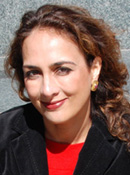 Case in point — Harmeet Kaur Dhillon is currently seeking a seat in the California State Assembly (from the 13th district no less, which covers several prominent San Francisco neighborhoods).
Case in point — Harmeet Kaur Dhillon is currently seeking a seat in the California State Assembly (from the 13th district no less, which covers several prominent San Francisco neighborhoods).
Harmeet’s web site indicates that she has exceptional academic credentials, extensive experience as an attorney, and has been at the forefront of important social issues, especially and including domestic violence in the South Asian community.
Of course, I mention Harmeet’s candidacy here not because of her C.V. or platform, but, let’s face it, because she’s a Sikh. That said, while having more Sikhs in elected public office is important, it does not follow that a Sikh should be supported simply because he or she is Sikh.
[updates in italics]
The New York City school system has established a new process for reporting bias and bullying, prompted partially by Sikhs marching in Queens, led by the Sikh Coalition, two months ago. 1.1 million students will be affected by the new regulations. 
The new regulation — which is intended to prevent bullying based on a student’s ethnicity, national origin, religion, gender, sexual orientation or disability — comes two months after leaders of the Sikh population marched in Queens to protest attacks against Sikh students and what the leaders described as a lackluster response by the public school system. [link]
What is this new regulation? It includes several important provisions:
- Every principal must designate a staff member to whom students can report bullying and harassment episodes.
- A new e-mail address — RespectForAll@schools.nyc.gov — has been set up so that students who have been harassed, but do not feel comfortable reporting it to their school, can seek help.
- Each school must create an annual plan “to ensure that it has a safe and supportive learning environment,” and train students in the new rules so that they understand what behavior is prohibited and where to go for help if they have been bullied.
- Schools will have to report all complaints of harassment, intimidation or bullying within 24 hours, and conduct full investigations, including interviews and written statements.
- A full investigation of an incident within 5 days
- A written report for the alleged victim of the results of any incident within 10 days
- School staff members who witness or are told about bullying episodes must report them, and schools must contact the families of accused students. [link]
It seems that “Respect for All” will be a idea promoted by NY schools this coming year, and trends in bias-related bullying will also be tracked.
Newspapers in Panjab have been buzzing about the recent proposal by the Sikhs in Haryana to form their own Gurdwara political body. However, the Chief Minister of Punjab, Parkash Singh Badal, and head of the Akali Dal has been on a warpath trying to prevent such a move. Badal even went so far as to give a sort of veiled threat of the outcome by such a move:
“We are a peace-loving community and hope that attempts to open a fresh festering wound in the country in Punjab would be dropped. The whole of country is already up in flames and it can easily do without another trouble spot in Punjab along the lines of Jammu and Kashmir.” [link]
The problem with forming an opinion or even coming to terms with the situation is the layers of political intentions and motives. In a move to somewhat demystify and explain the situation, I write this post.
Here at TLH we’ve have lengthy discussions about the potential commodification of religious symbols and also about problematic media representation of groups of people. So, I thought that the recent hoopla over the questionable photo shoot in the August issue of Vogue India would be a colorful addition to those discussions. The New York Times reported that,
Vogue India’s August issue presented a 16-page vision of supple handbags, bejeweled clutches and status-symbol umbrellas, modeled not by runway stars or the wealthiest fraction of Indian society who can actually afford these accessories, but by average Indian people. [link]
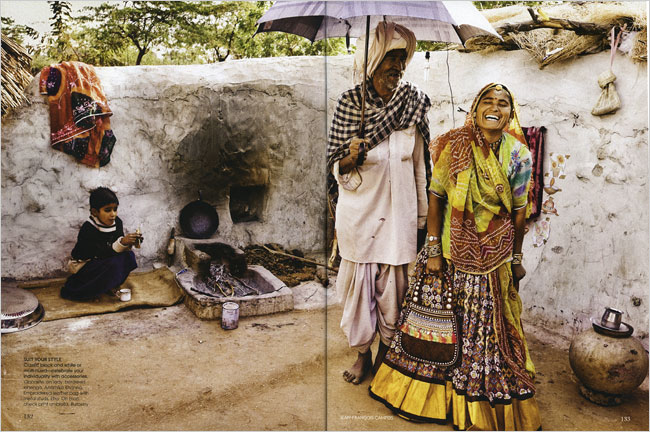 In one picture, a older poor woman holds a small child wearing a Fendi bib (cost = $100), in another pose a family preparing for their daily commute, sits on a motorbike with the mother riding the traditional sidesaddle way… oh and with her Hermès Birkin bag (cost = $10,000) on her wrist. Then of course, there is the turbaned man who models a Burberry umbrella (cost = $200). The photo spread itself is definitely striking. However, knowing that many Indians live on less than a dollar a day is even more striking when put in context with these exorbitant goods. The debate has raised questions from both sides of the table. Those that believe the photo shoot was distateful and that it exploits the poor by using them as props. Then there are others who believe this juxtaposition of wealth against poverty is a reality in India and exactly what people need to see.
In one picture, a older poor woman holds a small child wearing a Fendi bib (cost = $100), in another pose a family preparing for their daily commute, sits on a motorbike with the mother riding the traditional sidesaddle way… oh and with her Hermès Birkin bag (cost = $10,000) on her wrist. Then of course, there is the turbaned man who models a Burberry umbrella (cost = $200). The photo spread itself is definitely striking. However, knowing that many Indians live on less than a dollar a day is even more striking when put in context with these exorbitant goods. The debate has raised questions from both sides of the table. Those that believe the photo shoot was distateful and that it exploits the poor by using them as props. Then there are others who believe this juxtaposition of wealth against poverty is a reality in India and exactly what people need to see.
An Australian private school has agreed to apologize to a Sikh boy who was denied admission for his refusal to cut his hair and shave (as required by the school dress code). Surprisingly, this is the first time Australia has faced an anti-discrimination case of this nature:
The Anti-Discrimination Tribunal case was the first of its kind involving a Sikh student in Australia, although a British court found in a favour of a Sikh student in a similar trial more than 25 years ago.
An out-of-court settlement was reached in recent weeks after the school agreed to issue a public apology and pay the family undisclosed compensation. Ormiston College yesterday confirmed the settlement, which thwarts a public trial in the tribunal next month.
Australia has a system of minority rights protection that falls broadly under the “multiculturalist” umbrella (albeit in a very different way from the U.K. model). What I find amazing is the broad steps private schools are taking at this juncture to avoid accommodating religious minorities. Like the Sarika Singh case (also involving a private school), both of these schools are, at this point, familiar with its own Sikh community. Cultural competency and latent racism aren’t really compelling or effective screens for bigoted policies. In both cases, families had to turn to a legal remedy (and legal fees) to ensure access to a high quality education for their children.
There’s been a backlash around religious diversity in Western Europe for a while now, with the idea of “secularism” taking on a distinctly anti-religious (or, in most cases, anti-non-Christian-religions) flavor that isn’t really echoed in American conceptualizations of secularism. Do these two school cases mark the beginning of a reaffirmation of the principles underlying anti-discrimination laws? Is this a distinct position from what we see in France, Germany, Turkey and Italy?
Many of you may have already heard about the shooting that occurred on Sunday afternoon at the Sacramento Sikh Society Sports Complex, next to the gurdwara. A cricket match, part of a sports festival, was being held when an ongoing argument took a fatal turn. So far, I’ve seen no news of the substance of the dispute. But the result left Paramjit Pamma Singh (name misreported?) dead, and an unnamed 38 year old man with a leg wound. [link]
Gurpreet Singh Gosal, 24, of Indianapolis, was arrested and booked into Sacramento Main Jail Monday morning for the murder of Parmjit Pamma Singh, said sheriff spokesman Sgt. Tim Curran… The shooting followed an ongoing argument between the victims, Singh Gosal and a second man, according to investigators. The suspect and the second man opened fire on Pamma Singh and a 38-year-old man as they watched a tournament at the Sacramento Sikh Society Sports Complex in the 7600 block of Bradshaw Road about 1:30 p.m. Sunday, Curran said. Pamma Singh died at the scene. [link]
We must find better ways to resolve our disputes.
Often, I’m proud of how our community quickly takes action when action is necessary, though this weekend’s events illustrate a darker side of this willingness to take initiative. If anyone has more information about the substance of the dispute between the shooters and the victim, please share.
Gurpreet Singh was apprehended by other spectators and athletes who beat him into submission with cricket bats and hockey sticks until the police arrive.
This past week, I saw this advertisement about the “GurSikh Speed Meeting.” For those of you who have no idea the Sikhnet’s Gursikh Speed Meeting is obviously (and admittedly) the Sikh version of speed dating. According to the organizers of the program: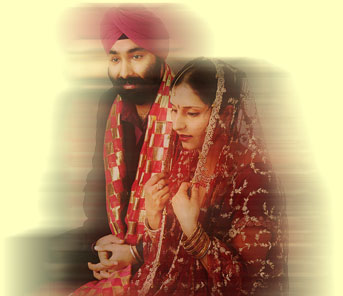
The concept is quite simple. An equal number of Sardars and Sardarnis register. On the event date, each Sardar will meet each Sardarni one-on-one and chat for a specified number of minutes rotating till they have met all the Singhnis. This face to face style of meeting has spurred much interest, in addition to, respecting the participant’s privacy. Only if there is an agreed ‘CLICK’ will an exchange of contact information occur.
I remember when I first saw Sikhnet advertising this a couple of years ago and thinking to myself, “this is bold.” I don’t necessarily think dating for Sikhs is anti-gurmat, but dating is definitely still taboo in A LOT of Punjabi Sikh families.
Honor killings — generally understood to constitute an intentional ending of the life of someone who has brought shame on a family or to one’s self due to perceived or actual infidelity, unfaithfulness, or betrayal — regrettably occur in the Sikh community.
Indeed, Sikhs have been charged with engaging in both forms of honor killings. With respect to an honor killing where the family has been allegedly shamed, just days ago Reema discussed the case of Gurparkash Khalsa — a man who heard rumors that his daughter had been impregnated by Ajmer Singh Hothi and, “driven by humiliation over his daughter’s soiled reputation,” now stands accused of killing Hothi. With respect to an honor killing where the self has been allegedly shamed, Jaspal Sohal was “battered to death by her husband with a hammer. He saw killing her as preferable to having her leaving him and ‘damaging his izzat‘ (personal honour).”
The Khalsa matter took place in the United States while the Sohal incident in the United Kingdom. There may be a temptation to think that honor killings are a uniquely “foreign” or immigrant problem that happens to be taking place in Western societies. See for example this article entitled “‘Honor’ killing comes to the US.” But honor killings may be more universal than Western societies may want to admit. In fact, America has a long history of tolerating, at least to some extent, such killings.
